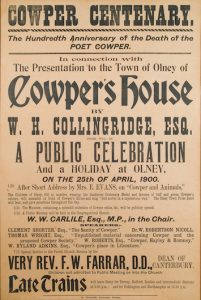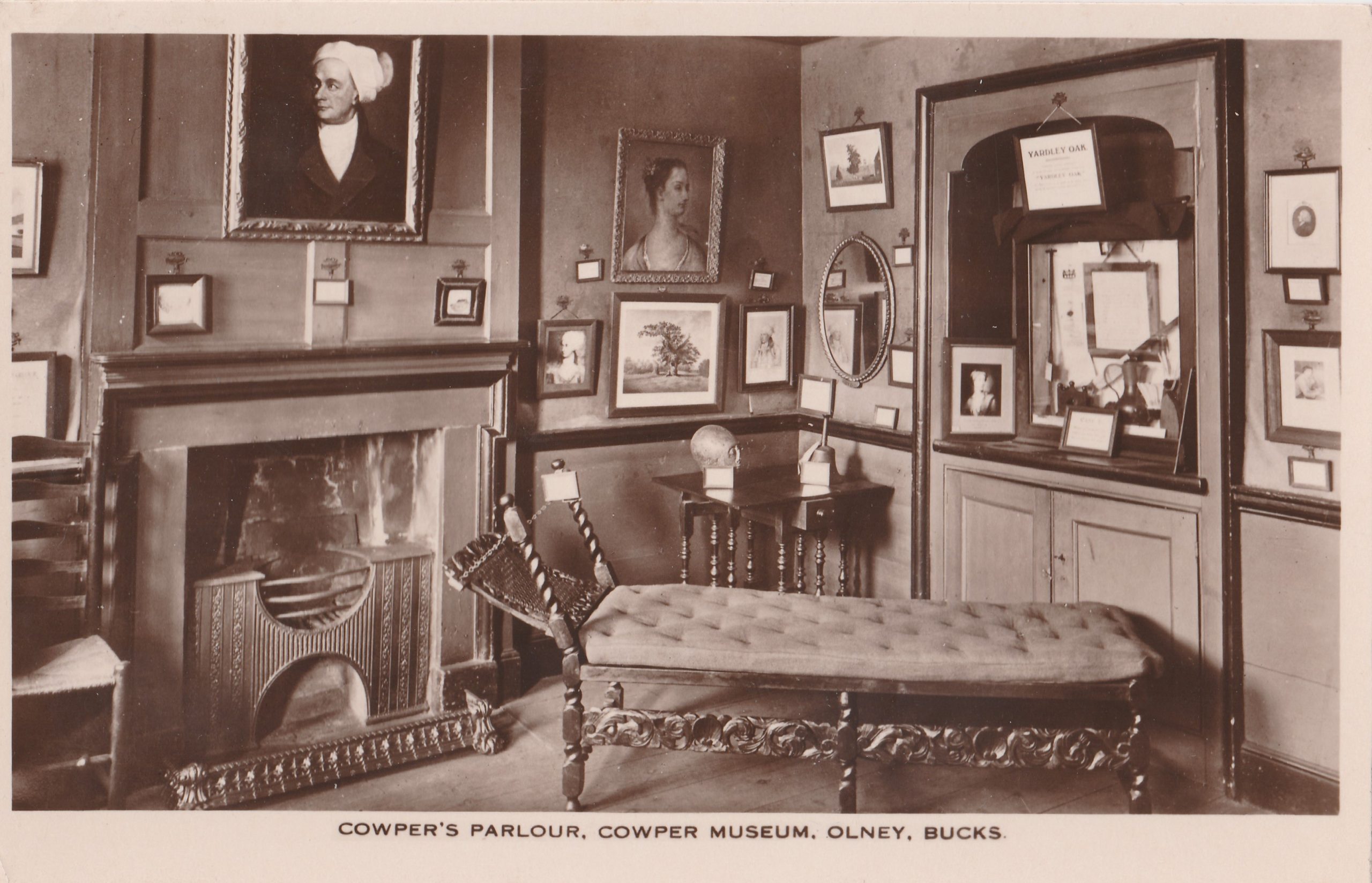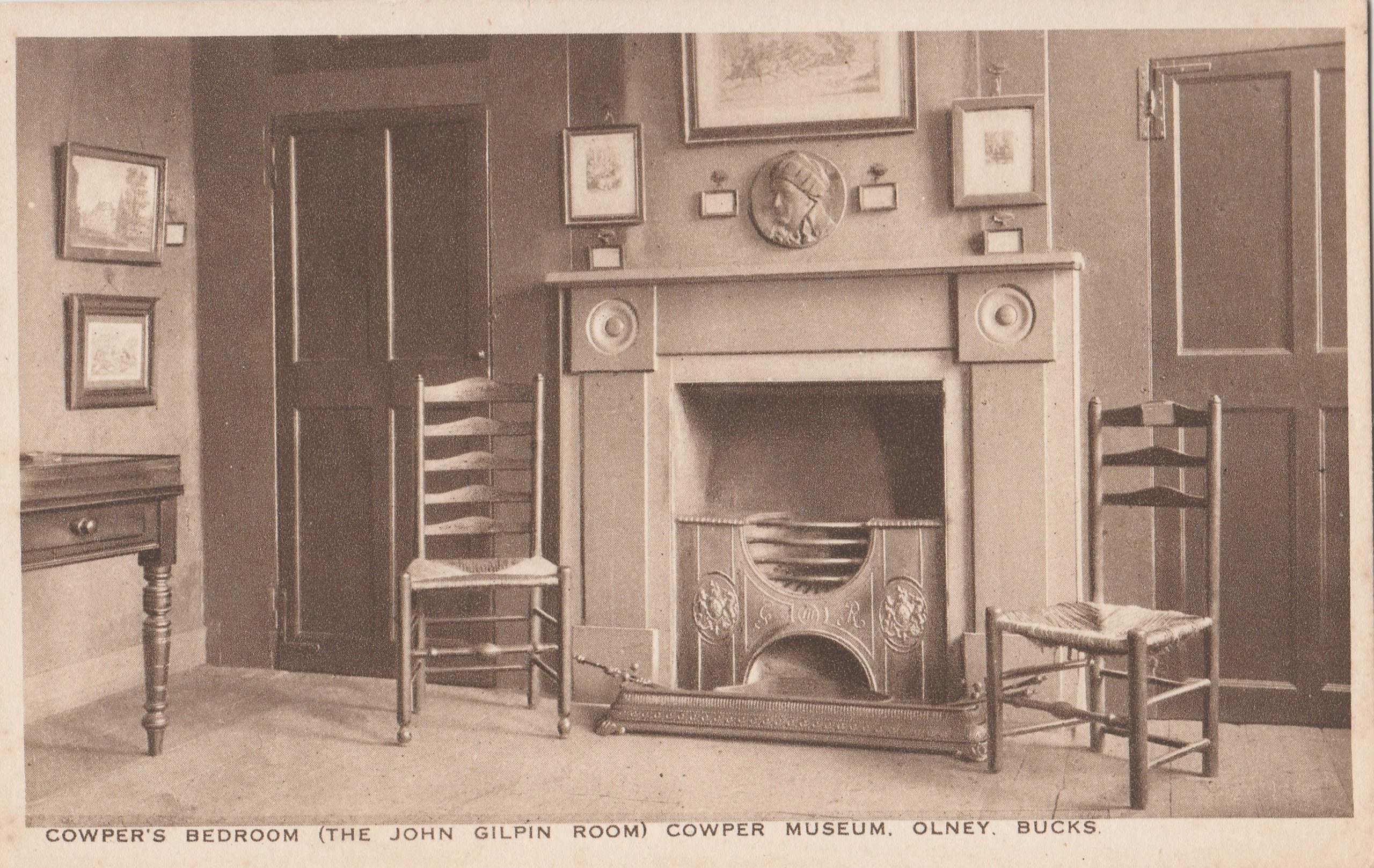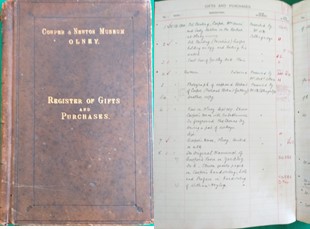Orchard Side and the Summer House had become a tourist attraction soon after Cowper’s death in 1800. Literary pilgrims visiting throughout the 19th Century traditionally carved their names on the inner walls of the Summer House.
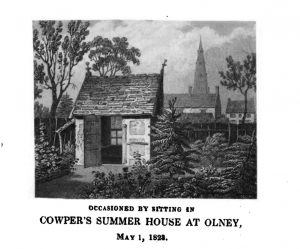
‘Cowper, illustrated by a series of views, in, or near, the park of Weston-Underwood, Bucks. Accompanied with copious descriptions and a brief sketch of the poet’s life’ James Storer and John Greig, Engravers, 1803
‘The Rural Walks of Cowper; displayed in a series of views near Olney, Bucks: representing the scenery exemplified in his poems; with descriptive sketches, and a memoir of the poet’s life’ J & H S Storer 1822

